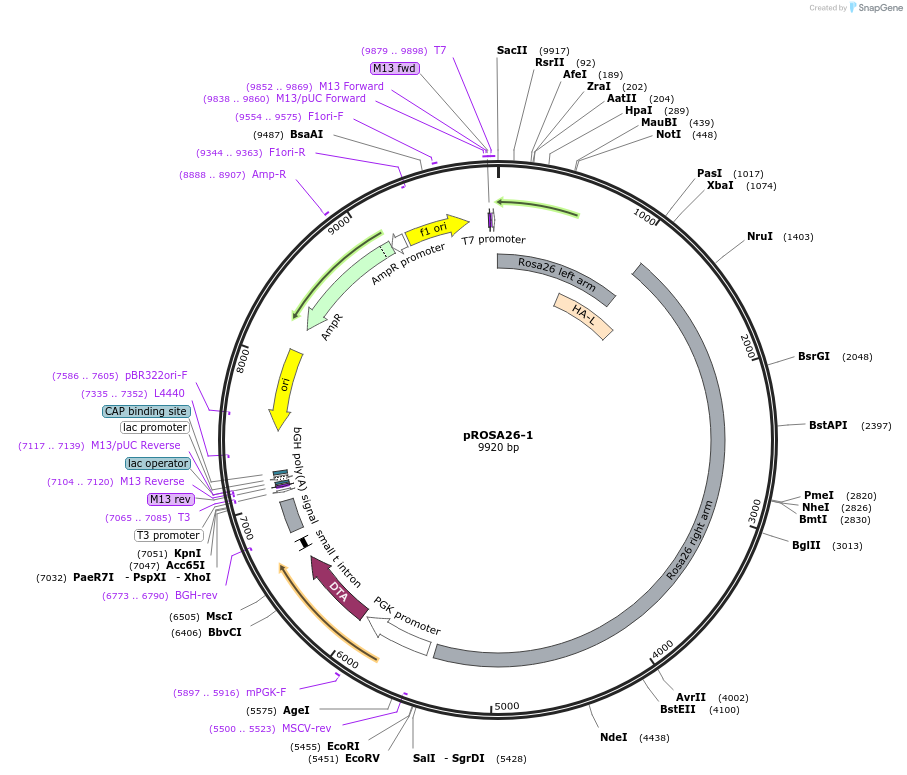-
Depositing Lab
-
Publication
-
Sequence Information
Ordering
| Item | Catalog # | Description | Quantity | Price (USD) | |
|---|---|---|---|---|---|
| Plasmid | 21714 | Standard format: Plasmid sent in bacteria as agar stab | 1 | $89 | |
Backbone
-
Vector backbonepBluescript KS (-)
-
Backbone manufacturerStratagene
- Backbone size w/o insert (bp) 4486
-
Vector typeMouse Targeting
Growth in Bacteria
-
Bacterial Resistance(s)Ampicillin, 100 μg/mL
-
Growth Temperature37°C
-
Growth Strain(s)DH5alpha
-
Copy numberHigh Copy
Gene/Insert
-
Gene/Insert nameROSA26
-
Alt namegene trap ROSA26
-
SpeciesM. musculus (mouse)
-
Insert Size (bp)5360
-
Entrez GeneGt(ROSA)26Sor (a.k.a. Gtrgeo26, Gtrosa26, R26, ROSA26, Thumpd3as1)
Cloning Information
- Cloning method Restriction Enzyme
- 5′ cloning site SacII (not destroyed)
- 3′ cloning site EcoRV (not destroyed)
- 5′ sequencing primer T7
- 3′ sequencing primer BGH-rev
- (Common Sequencing Primers)
Resource Information
-
Addgene Notes
-
Articles Citing this Plasmid
Terms and Licenses
-
Academic/Nonprofit Terms
-
Industry Terms
- Not Available to Industry
Trademarks:
- Zeocin® is an InvivoGen trademark.
Depositor Comments
General ROSA26-1 targeting vector. For more information visit - http://research.mssm.edu/soriano/lab
We recommend you order this plasmid along with SAbgeo and pROSA26-5' as a "ROSA26 targeting kit".
Please note that although the full plasmid sequence indicates PmeI does not cut the plasmid, there is a PmeI site somewhere in the plasmid. See Notes from Addgene link above for more information.
These plasmids were created by your colleagues. Please acknowledge the Principal Investigator, cite the article in which the plasmids were described, and include Addgene in the Materials and Methods of your future publications.
-
For your Materials & Methods section:
pROSA26-1 was a gift from Philippe Soriano (Addgene plasmid # 21714 ; http://n2t.net/addgene:21714 ; RRID:Addgene_21714) -
For your References section:
Generalized lacZ expression with the ROSA26 Cre reporter strain. Soriano P.. Nat Genet. 1999 Jan;21(1):70-1. 10.1038/5007 PubMed 9916792







